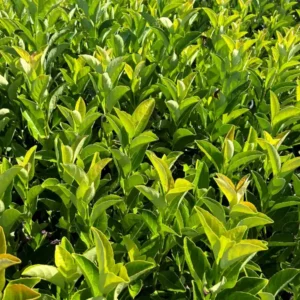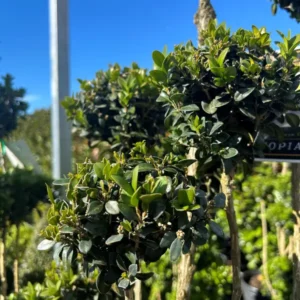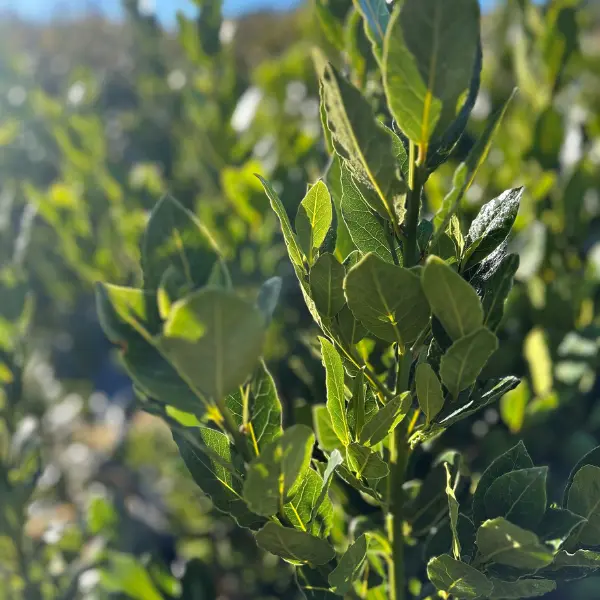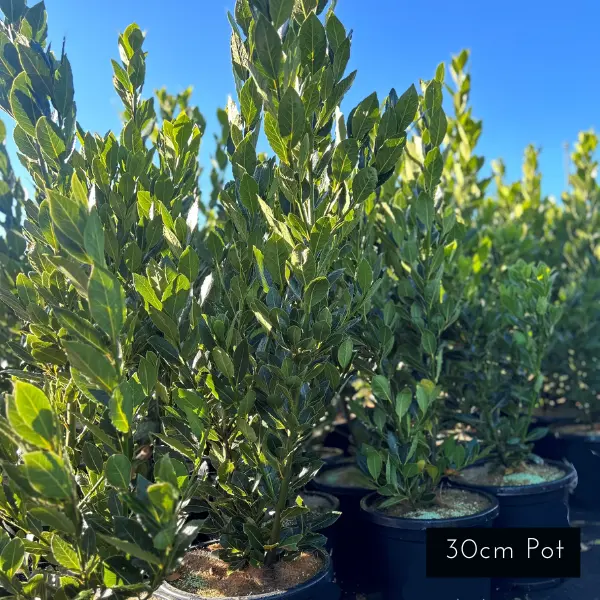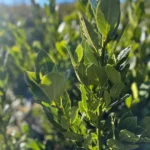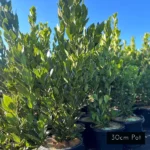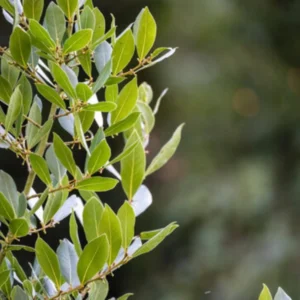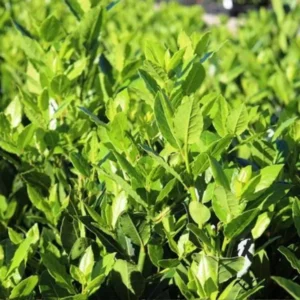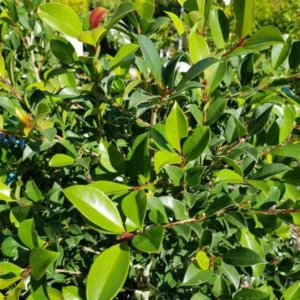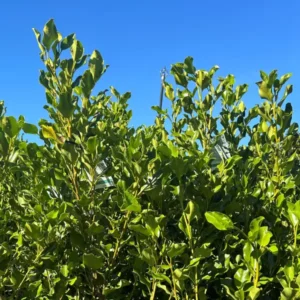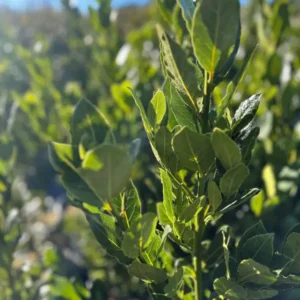Bay Trees have long been used for their versatility in landscaping. Available in regular Bay Tree and Baby Bay variations. Baby Bay or Dwarf Bay will reach a mature size of around 2m, making it an ideal choice for pool side planting, narrow garden beds and planter pots. Regular Bay Trees will reach around 2 meters, making them a brilliant choice for privacy screening and creating a Mediterranean inspired private oasis.
Product Specifications
- Common Name: Bay Tree
- Botanical Name: Laurus Nobilis
- Regular Bay Tree Mature Size: 2m tall x 2m wide
- Baby Bay Tree Mature Size: 2m tall x 1-2m wide
- Foliage: Dark Green
- Form/Habit: Upright shrub, compact, topiary
- Uses: Screening, hedging, topiary
- Evergreen/Deciduous: Evergreen
- Soil: Most well draining soil
- Drought Hardy: Moderate
- Growth Rate: Medium
- Sun: Full sun – semi shade
- Flowers: Yellow flowers in Spring
- Water Requirement: Low – medium
- Maintenance: Low – medium, benefits from light pruning
- Edible: Yes, leaves are used for cooking
- Planter Suitability: Yes, allow adequate room for growth
- Native: No
Commonly Asked Questions
How far apart do I plant Bay Trees for a screening hedge?
A little under a meter apart would be ideal for Baby Bay trees. Consider a meter apart if you are planting regular bay trees.
Are Bay trees fast growing?
Baby Bay have a medium growth rate. Baby Bay / Dwarf Bay typically grow a little faster than regular bay trees, making them an ideal choice for hedging and topiaries.
Are Bay trees edible?
Bay trees are valued for their culinary use—specifically, their aromatic leaves are commonly used in cooking. They can also be cultivated as ornamental plants due to their evergreen nature, glossy leaves, and the ability to be pruned into various shapes, such as topiaries or hedges.


